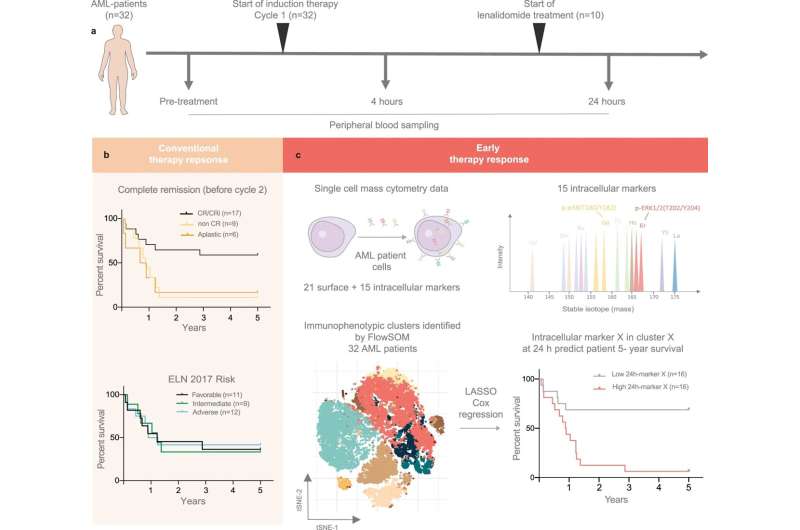This article has been reviewed according to Science X's editorial process and policies. Editors have highlighted the following attributes while ensuring the content's credibility:
fact-checked
peer-reviewed publication
trusted source
proofread
A blood sample 24 hours after the start of chemotherapy can predict survival

Researchers from the University of Bergen, Norway, have found a new method that within hours can predict if certain cancer patients will survive or not after chemotherapy.
Acute myeloid leukemia is an aggressive blood cancer with poor survival. Although high rates of initial chemotherapy response, patients often relapse due to the selection and development of chemotherapy-resistant leukemic cells.
"When treating patients with leukemia, it is challenging to quickly follow if the patient is responding to therapy or not," says Benedicte Sjo Tislevoll, researcher at the University of Bergen and leader of the new study.
The response to therapy is currently measured after weeks to months of treatment, thereby losing important time. However, an immediate response to chemotherapy can be measured by investigating the functional properties of the leukemic cells.
"Our results show that the protein ERK1/2 increases within the first 24 hours of chemotherapy in patients who have a poor response to therapy. We believe that this protein is responsible for the cancer cells' resistance to chemotherapy and can be used to distinguish responders from non-responders," the researcher says.
"We think that this is an important key in our understanding of cancer, and our aim is to use this information to change treatment early for patients who are not responding to therapy," Tislevoll concludes.
The findings are published in the journal Nature Communications.
More information: Benedicte Sjo Tislevoll et al, Early response evaluation by single cell signaling profiling in acute myeloid leukemia, Nature Communications (2023). DOI: 10.1038/s41467-022-35624-4
















